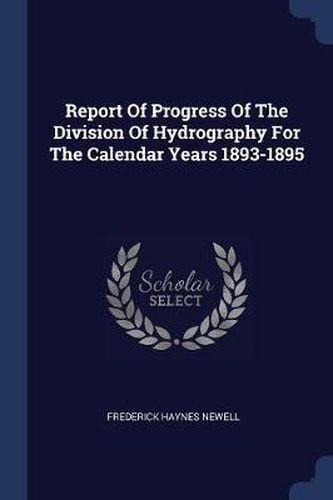Readings Newsletter
Become a Readings Member to make your shopping experience even easier.
Sign in or sign up for free!
You’re not far away from qualifying for FREE standard shipping within Australia
You’ve qualified for FREE standard shipping within Australia
The cart is loading…






This historic book may have numerous typos and missing text. Purchasers can usually download a free scanned copy of the original book (without typos) from the publisher. Not indexed. Not illustrated. 1895 edition. Excerpt: …1894 the commissioner of public works began a further examination, including surveys and measurements of volumes. The data thus obtained have not been published in full, .those published relating mainly to flood volumes of the larger streams. At higher points a few measurements have been made by this Survey for the purpose of obtaining general information applicable to the smaller rivers. There are given herewith descriptions of stations at Red Bluff and Tehama, on the Sacramento Eiver, and the heights of water observed at these points by the Weather Bureau and the Central Pacific liailroad Company, respectively. RED BLUFF STATION, ON SACRAMENTO RIVER. This station is located at the northeast corner of the wagon bridge just east of the town. It was established and is read by the Weather Bureau. The station is distant one-fourth of a mile from the observer’s oftice in town. The gage is a painted pine plank, placed vertically, fastened to a sycamore tree 20 or 30 feet from the bridge. The channel is sandy and shifting in character. Measurements of discharge were made from the same bridge, but the current is very swift and is badly broken by the piers, introducing a probable error in the measurements of, say, 20 per cent. About 9 miles above Eed Bluff the river is in a broad, uniform channel, and has a slow velocity even at high stages, owing to the contraction in the canyon a short distance below. The ferryboat is large and the bow extends several feet beyond the water line, resulting in favorable conditions for discharge measurements. It was agreed between Mr. Lippincott and the county supervisors that if the Geological Survey would place a gage at this point, the ferryman, who is paid by the county, would be instructed to report regularly…
$9.00 standard shipping within Australia
FREE standard shipping within Australia for orders over $100.00
Express & International shipping calculated at checkout
This historic book may have numerous typos and missing text. Purchasers can usually download a free scanned copy of the original book (without typos) from the publisher. Not indexed. Not illustrated. 1895 edition. Excerpt: …1894 the commissioner of public works began a further examination, including surveys and measurements of volumes. The data thus obtained have not been published in full, .those published relating mainly to flood volumes of the larger streams. At higher points a few measurements have been made by this Survey for the purpose of obtaining general information applicable to the smaller rivers. There are given herewith descriptions of stations at Red Bluff and Tehama, on the Sacramento Eiver, and the heights of water observed at these points by the Weather Bureau and the Central Pacific liailroad Company, respectively. RED BLUFF STATION, ON SACRAMENTO RIVER. This station is located at the northeast corner of the wagon bridge just east of the town. It was established and is read by the Weather Bureau. The station is distant one-fourth of a mile from the observer’s oftice in town. The gage is a painted pine plank, placed vertically, fastened to a sycamore tree 20 or 30 feet from the bridge. The channel is sandy and shifting in character. Measurements of discharge were made from the same bridge, but the current is very swift and is badly broken by the piers, introducing a probable error in the measurements of, say, 20 per cent. About 9 miles above Eed Bluff the river is in a broad, uniform channel, and has a slow velocity even at high stages, owing to the contraction in the canyon a short distance below. The ferryboat is large and the bow extends several feet beyond the water line, resulting in favorable conditions for discharge measurements. It was agreed between Mr. Lippincott and the county supervisors that if the Geological Survey would place a gage at this point, the ferryman, who is paid by the county, would be instructed to report regularly…